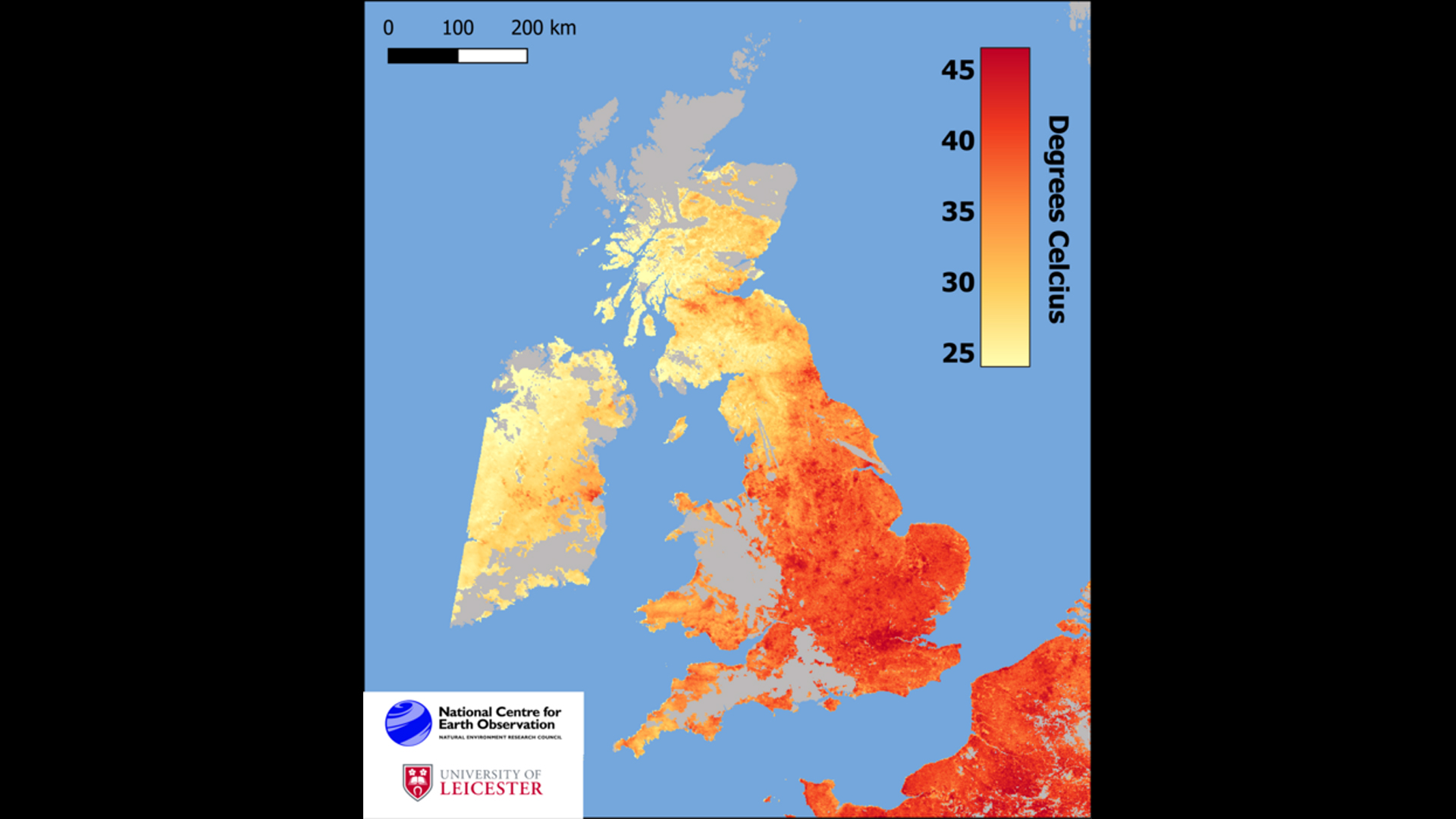Europe hits record-high temperatures as satellites track heat wave from space
Record-breaking temperatures come as Europe struggles with a months-long drought.

Smashed temperature records, the highest possible risk of wildfires and broiling soil are revealed in satellite data as Europe swelters in an extreme heatwave that is set to exacerbate a widespread drought caused by the lack of rain in winter and spring.
Scientists know that Europe is warming faster than the rest of the world amid progressing climate change, and the latest heatwave just confirms the trend. In the U.K, which is otherwise known for lukewarm summers and cloudy skies, Tuesday (July 19) saw thermometers attack the dreaded 105-degree Fahrenheit (40 degrees Celsius) threshold for the first time in history.
At about 1 p.m local time, the U.K. national weather forecaster Met Office announced that a new all-time high temperature was recorded in the country. Even as temperatures reached 104.5 degrees F (40.2 degrees C), the Met Office said the new record, measured near London's Heathrow airport, may not last long as temperatures were still rising at that time.
Related: 10 devastating signs of climate change satellites can see from space
The U.K. is one of the European countries where the highest alert for the risk of wildfires is in place on Tuesday. Italy, France, and Spain are also on the highest alert, with the latter two still fighting devastating blazes that erupted in early July.
According to the European environment monitoring program Copernicus, over 150 square miles (390 square kilometers) of land succumbed to flames over the past ten days throughout France, Spain and Portugal. Unfortunately, the conditions in these areas will continue to be fertile for the spread of wildfires.
Data from Earth observation satellites revealed that ground temperatures in the U.K. exceeded 122 degrees F (50 degrees C) already on Monday morning (July 18), the first day of the heatwave's forecasted two-day peak.
Get the Space.com Newsletter
Breaking space news, the latest updates on rocket launches, skywatching events and more!

The satellite map revealed hot spots around major cities, especially the sprawling capital London, where concrete and building material absorb the heat and then act like unwanted radiators.
"Space based observations of the temperature of the surface of the land offer unparalleled knowledge of the spatial structure of these heatwave events," Darren Ghent, a research fellow at the National Centre for Earth Observation in Leicester, said in a statement.
Although temperature records focus on ambient air temperature, the heat that radiates from the ground has a direct impact on how hot the air gets.
According to the European Commission's Joint Research Centre (JRC), the current heatwave is also set to exacerbate the prolonged drought, which is currently affecting nearly 50% of European land (including the U.K).
Low soil water content affects vegetation, including agricultural crops, the JRC said in a statement, as well as hydropower production in countries that rely on it. According to the JRC, some European regions received only 19% of the average winter and spring precipitation, which led to depleted reservoirs.
Follow Tereza Pultarova on Twitter @TerezaPultarova. Follow us on Twitter @Spacedotcom and on Facebook.
Join our Space Forums to keep talking space on the latest missions, night sky and more! And if you have a news tip, correction or comment, let us know at: community@space.com.

Tereza is a London-based science and technology journalist, aspiring fiction writer and amateur gymnast. Originally from Prague, the Czech Republic, she spent the first seven years of her career working as a reporter, script-writer and presenter for various TV programmes of the Czech Public Service Television. She later took a career break to pursue further education and added a Master's in Science from the International Space University, France, to her Bachelor's in Journalism and Master's in Cultural Anthropology from Prague's Charles University. She worked as a reporter at the Engineering and Technology magazine, freelanced for a range of publications including Live Science, Space.com, Professional Engineering, Via Satellite and Space News and served as a maternity cover science editor at the European Space Agency.









